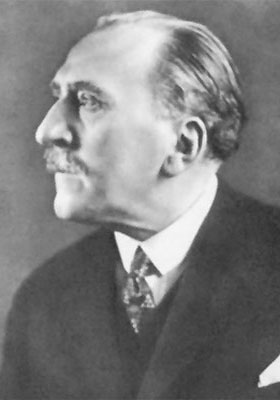
If you were asked to provide a single adjective to describe the Scopes trial of 1925, you could do worse than to select dramatic. It was dramatic in that it was in part staged, with George Rappleyea, who convinced Dayton’s leaders to sponsor the test case of the Butler Act in their town, as the chief dramaturge. (Rappleyea also wanted to be the casting director, suggesting, “Let’s get H. G. Wells and a lot of big fellows” to testify for the defense. Wells’s reaction: “They must mean some other Wells. I never heard of Dayton.”) But it was dramatic, too, in that it contained “animated action or striking presentation,” to quote the Oxford English Dictionary, both from the larger-than-life figures of William Jennings Bryan and Clarence Darrow and from the bit players like Wilbur Glenn Voliva and T. T. Martin and even the no-show Elmer Chubb.
So it’s not surprising that Inherit the Wind, Jerome Lawrence and Robert E. Lee’s 1955 Broadway play, was such a hit. To be sure, Lawrence and Lee weren’t trying to write a documentary about the Scopes trial. “We used the teaching of evolution as a parable,” Lawrence told a newspaper in 1996: “a metaphor for any kind of mind control. It’s not about science versus religion. It’s about the right to think.” Still, passages from the trial appear, more or less verbatim, in the play script. And the producers of the 1960 movie based on the play, directed by Stanley Kramer, were happy to emphasize its historicity, not merely by the casting decisions—Fredric March as Matthew Harrison Brady was a convincing William Jennings Bryan—but even by the tagline: “It’s all about the fabulous ‘monkey trial’ that rocked America!”
Subsequently three further television adaptations of Inherit the Wind followed: a version in 1965, directed by George Schaefer, with Ed Begley as Matthew Harrison Brady and Melvyn Douglas as Henry Drummond (the Darrow character); a version in 1988 directed by David Greene, with Kirk Douglas as Brady and Jason Robards as Drummond; and a version in 1999 directed by Daniel Petrie Sr., with George C. Scott as Brady and Jack Lemmon as Drummond. Inherit the Wind isn’t the only play about the Scopes trial, either. Gale Johnson’s Inherit the Truth (1987), intended as a corrective to Lawrence and Lee, was performed at Dayton’s annual Scopes Festival for twenty years, and Peter Goodchild’s The Great Tennessee Monkey Trial (1994/2006), commissioned by L. A. Theater Works, was performed around the country, usually with Ed Asner as Bryan.
But if the Scopes trial was so dramatic as to demand so many theatrical treatments, you might ask, why did it take thirty years for someone to write a play based on it? If that’s what you were asking, then you evidently haven’t been reading The New York Times for January 2, 1927. (I can’t think why not.) Because there you would have discovered, under the headline “Dayton Trial is Dramatized by Hungarian,” a story beginning, “A Hungarian dramatist, Ferenc Herczeg, is probably the first playwright to utilize the celebrated Dayton trial as the theme for a play called ‘Monkey Business.’” Confirming the view that the Scopes trial demanded a theatrical treatment, the Times added, “Those who have patiently waited for this announcement may now collect their wagers…‘Monkey Business,’ described as a fantastic comedy, will soon be placed in rehearsal.”
As far as I can discover, though, Monkey Business was never produced. Of course, there have been different plays and films with the same title, including the 1931 film with the Marx Brothers and the 1952 film directed by Howard Hawks, but I’ve been completely unable to discover any indication that a play called Monkey Business, by Ferenc Herczeg and/or translated by John S. Vajda, whom the Times credited with the English translation, was ever produced. But I’m confident that the Times story wasn’t a hoax. For one thing, the Brooklyn Daily Eagle for December 9, 1926, also refers to the play briefly, not mentioning the Scopes trial but describing the Hungarian original as having had a lengthy run in Budapest. And Vajda’s translation was listed in the Catalogue of Copyright Entries at the Library of Congress in 1927, although it was never published.
The original play by Ferenc Herczeg, I ascertained, was entitled Majomszínház, which translates as Monkey Theater or Ape Theater—the Hungarian “majom,” like the German “Affe” or the French “singe,” apparently applies indifferently to monkeys and apes. The play was published in Hungarian in 1925, the same year in which it was first staged in Budapest, where it enjoyed a revival in 1998. Herczeg (1863–1954; seen above) was a well-known Hungarian playwright and novelist, described in the Columbia Dictionary of Modern European Literature (1980) as possessing “the sort of entertaining imagination and observation that stimulates but does not profoundly stir. His ideology rarely went a step farther than was permissible for a Hungarian gentleman…His comedies are romantic and pleasant, yet somehow second-rate.”
While a few of Herczeg’s plays and novels were published in English translation, Majomszínház was not among them. (Not all of the adaptations of his work were benign. In 1949, he sued MGM over the film Seven Sweethearts (1942), the screenplay of which he claimed was plagiarized from his A Gyurkovics-Leányok (1893), which was translated into English by Edith Ellis as Seven Girls (1910) and then produced by Paramount as the silent film The Seven Sisters (1915). The delay in his filing suit was due to the fact that he was imprisoned in a Nazi concentration camp in Hungary during World War II. The case was finally settled out of court.) So this is the point at which a reasonable person would have stopped investigating. It also happens to be the point that I began to correspond with a used bookstore in Szeged, Hungary. I report on the consequences in part 2.

